ILKKA KOSUNEN: EXPLORING THE DYNAMICS OF THE BIOCYBERNETIC LOOP IN PHYSIOLOGICAL COMPUTING
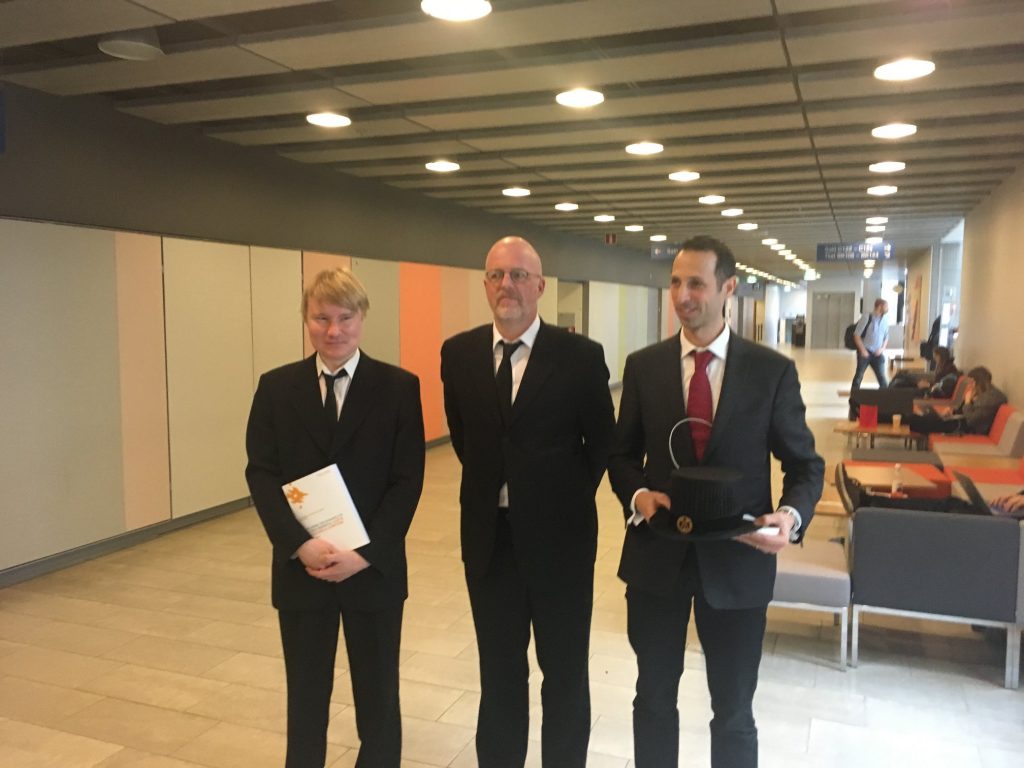
Enactive Virtuality Research Group, Tallinn University
Activities related to enaction, and enactive systems, art-science, academic and popular events, including related industry engagements

Pia Tikka and Martin Jaroszewicz gave a joint talk at the CNA Sound and Storytelling Conference.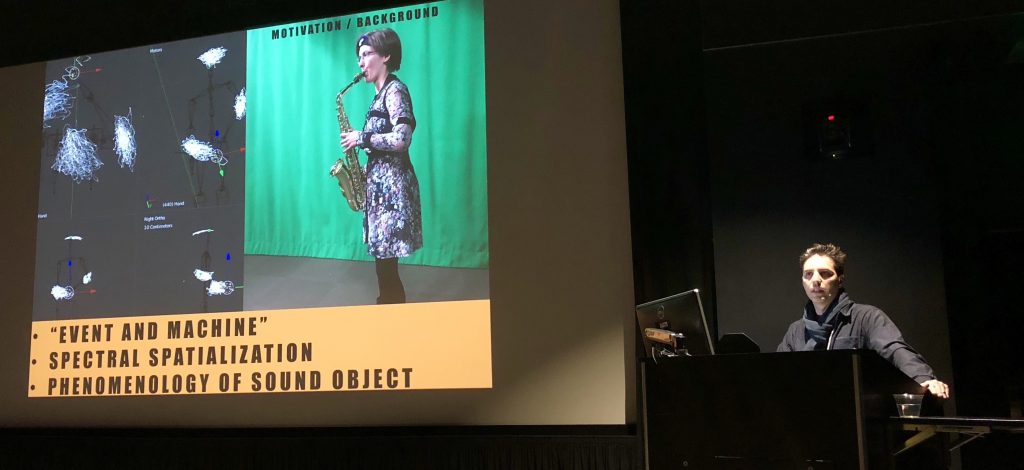
Image: Dr. Martin Jaroszewicz disucssing his ideas of enactive VR soundscapes at the Chapman University conference, Orange, CA, March 22.
“Enactive Virtuality – a framework for dynamically adaptive soundscapes”.
The novel notion of enactive virtuality is discussed, drawing from the theories of enactive mind [1], and the concept of enactive cinema [2]. The key attribute of ‘enactive’ refers here to the setting in which the human agent is in continuous feed-back-looped interaction with the surrounding world. Enactive virtuality in turn refers to the story emerging in the agent’s mind in this dynamical setting in order to make sense of the world. This story is based on the agent’s current situation and previous experiences [3], and in relation to others through neurally built-in imitation of their actions [4]. Thus, the concept of ‘enactive virtuality’ extends beyond the common techno-spatial buzzword of ‘virtual reality’. While virtual reality technologies allow platforms where the perception of sound events can be modulated algorithmically, we describe the human agent’s experience of a dynamically adaptive soundscape as an expression of enactive virtuality.Theories and techniques of sound transformations in the spectral domain [5,6,7] for this setting are discussed.
References:
[1] Varela F, Thompson E, Rosch E. 1991. Embodied Mind. Cambridge, MA: MIT Press.
[2] Tikka P. 2008. Enactive Cinema: Simulatorium Eisensteinense. PhD diss. Helsinki: Univ. Art and Design Publ.
[3] Heyes CM, Frith CD. The cultural evolution of mind reading. Science. 2014 Jun 20;344(6190):1243091. doi:10.1126/science.1243091.
[4] Gallese V, Eagle MN, Migone P. 2007. Intentional attunement: mirror neurons (…) J Am Psychoanal Assoc. 55(1):131-76.
[5] Jaroszewicz, M. 2015 Compositional Strategies in Spectral Spatialization. PhD thesis,University of California Riverside,
[6] Jaroszewicz, M. 2017 ”Interfacing Gestural Data from Instrumentalists,” ART – Music Review, vol. 32.
[7] Kim-Boyle. 2008. “Spectral spatialization – an overview,” RILM Abstracts of Music Literature. http://hdl.handle.net/2027/spo.bbp2372.2008.086
 See full program here
See full program here
At 12:15 session Pia Tikka, Research Professor, Baltic Film, Media, Arts and Communication School “Neurocinematics”
My 13 minutes will introduce a multidisciplinary research paradigm of neurocinematics. Combining methods of cinema, enactive media, and virtual screen characters with those of cognitive sciences it allows us to unravel new aspects of the neural basis of storytelling, creative imagination, and narrative comprehension. In addition to contributing to academic research on human mind, neurocinematics contributes to a range of more specifically targeted goals, such as the impact of audiovisual media on its audience for artistic, therapeutic, or commercial implementations, to name few of many.

Tallinn University is celebrating Brain Awareness Week (BAW) for the second year in a row! This year we have an open seminar
“Meet the Researchers”
Monday, March 12 from 2PM to 6 PM “Meet the Researchers”, University of Tallinn (Narva mnt. 29), room A-325.
Take part of a seminar where experts from the field take the floor and discuss brain, promote the benefits of brain research and inform the public about what we do as neuroscientist and brain researchers.
Researchers:
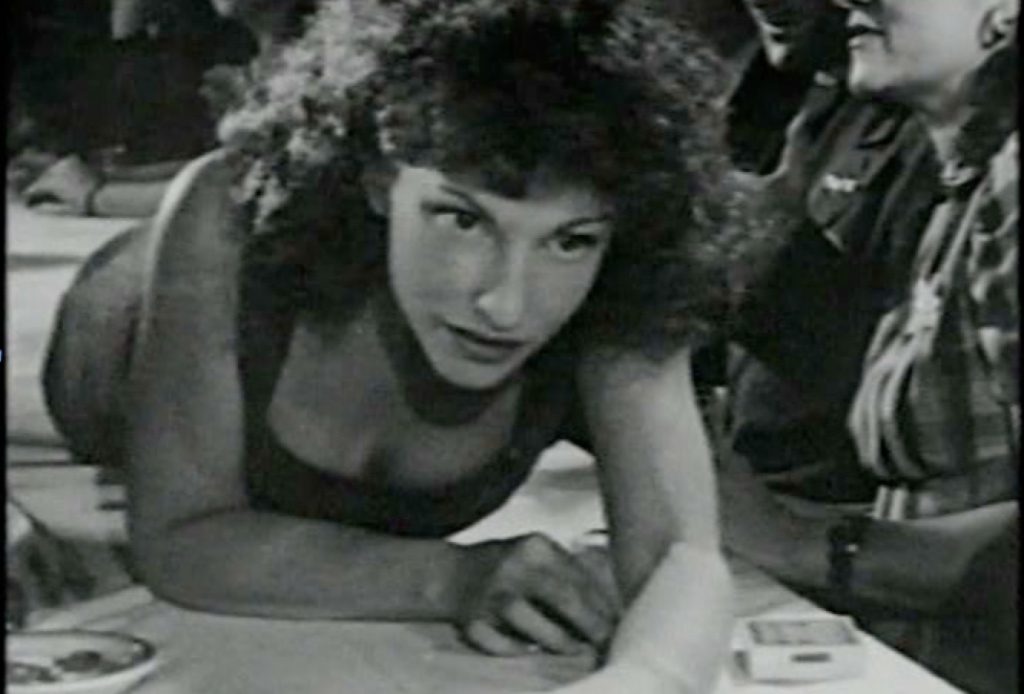
Pia Tikka
The film that all subjects viewed in fMRI and in MEG brain scanning labs at Aalto University was At Land from 1944 by Maya Deren. I suggested this experimental film for our brain imaging studies due to its special characteristics.
“The dancer, choreographer, and filmmaker Maya Deren can be seen as one of the pioneers of screendance. Her experimental films have challenged conventional plot- driven mainstream cinema by emphasizing an ambiguous experience, open for multiple interpretations. For Deren film viewing is a socially determined ritual embodying intersubjectively shared experiences of participants. This makes her films particularly interesting for today’s neurocinematic studies. Deren’s ideas also anticipate the recent enactive mind approach, according to which the body-brain system is in an inseparable manner situated and coupled with the world through interaction. It assumes that both private, such as perception and cognition, and intersubjective aspects of human enactment, such as culture, sciences, or the arts, are based on the embodiment of life experience. Reflecting this discourse, Deren’s film At Land is analyzed as an expression of a human body-brain system situated and enactive within the world, with references to neuroscience, neurocinematic studies, and screendance” (Tikka & Kaipainen 2016).
Read more of the film and why it is of interest to cognitive neuroscience studies here:
Pia Tikka and Mauri Kaipainen (2016). “Screendance as Enactment in Maya Deren’s At Land: Enactive, Embodied, and Neurocinematic Considerations.” In The Oxford Handbook of Screendance Studies Edited by Douglas Rosenberg. Print Publication Date: Aug 2016 Subject: Music, Dance Online Publication Date: Jun 2016 DOI: 10.1093/oxfordhb/9780199981601.013.15
2015
One of the challenges of naturalistic neurosciences using movie-viewing experiments is how to interpret ob- served brain activations in relation to the multiplicity of time-locked stimulus features. As previous studies have shown less inter-subject synchronization across viewers of random video footage than story-driven films, new methods need to be developed for analysis of less story-driven contents. To optimize the linkage between our fMRI data collected during viewing of a deliberately non-narrative silent film ‘At Land’ by Maya Deren (1944) and its annotated content, we combined the method of elastic-net regularization with the model- driven linear regression and the well-established data-driven independent component analysis (ICA) and inter-subject correlation (ISC) methods.(…)
“In our study, we aimed to go beyond story-driven narratives. What methods could improve the analysis of time-locked interdependence between the brain data and the content of more ambiguous non- narrative films, or video recordings of non-structured events, such as improvised conversation? This question motivated us to study the link- age between our fMRI data collected during viewing of a non-narrative silent film ‘At Land’ directed by Maya Deren (1944, 14′40′′) and its annotated content. The film ‘At Land’ shows an expressionless young woman wandering in her surroundings without any explicit motivation for her behavior, such as collecting stones in the beach, or jumping down from a rock. In addition, according to the director-actress herself, she deliberately avoided emotional expressions, while the cinemato- graphic aspects, such as camera movements and framing, have been carefully composed (Deren, 2005). How to link the cinematic features of such an ambiguous film with the viewers’ brain activation detected while they are trying to make sense of it? As the film ‘At Land’ does not give any tools for inferring the character’s mental state, goals of her actions, or inner reasons, story-based film structure analysis methods do not necessarily allow adequate interpretation for the resulting linkages. Instead, by annotating all bodily actions and camera-related features specifically pointed out by the director of the film, one might find meaningful linkages between the film content and collected fMRI data”(Kauttonen et al 2016).
Read more here: Kauttonen, J., Hlushchuk, Y., and Tikka, P. (2015). “Optimizing methods for linking cinematic features to fMRI data.” NeuroImage 110C:136–148. doi: 10.1016/j.neuroimage.2015.01.063.
2016
Observation of another person’s actions and feelings activates brain areas that support similar functions in the observer, thereby facilitating inferences about the other’s mental and bodily states. In real life, events eliciting this kind of vicarious brain activations are intermingled with other complex, ever-changing stimuli in the environment. One practical approach to study the neural underpinnings of real-life vicarious perception is to image brain activity during movie viewing. Here the goal was to find out how observed haptic events in a silent movie would affect the spectator’s sensorimotor cortex. (…)
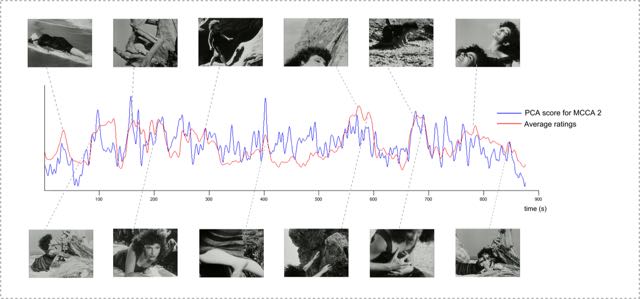
Kaisu Lankinen, Eero Smeds, Pia Tikka, Elina Pihko, Riitta Hari, Miika Koskinen (2016) Haptic contents of a movie dynamically engage the spectator’s sensorimotor cortex. Human Brain Mapping.
DOI: 10.1002/hbm.23295
2018
Another article that harnessed our data collected when people watched At Land by Deren (1944):
Movie-viewing allows human perception and cognition to be studied in complex, real-life-like situations in a brain-imaging laboratory. Previous studies with functional magnetic resonance imaging (fMRI) and with magneto- and electroencephalography (MEG/EEG) have demonstrated consistent temporal dynamics of brain activity across movie viewers. However, little is known about the similarities and differences of fMRI and MEG/EEG dynamics during such naturalistic situations. (…)
Below Fig. 6. Time courses of the most similar MEG and fMRI signals.
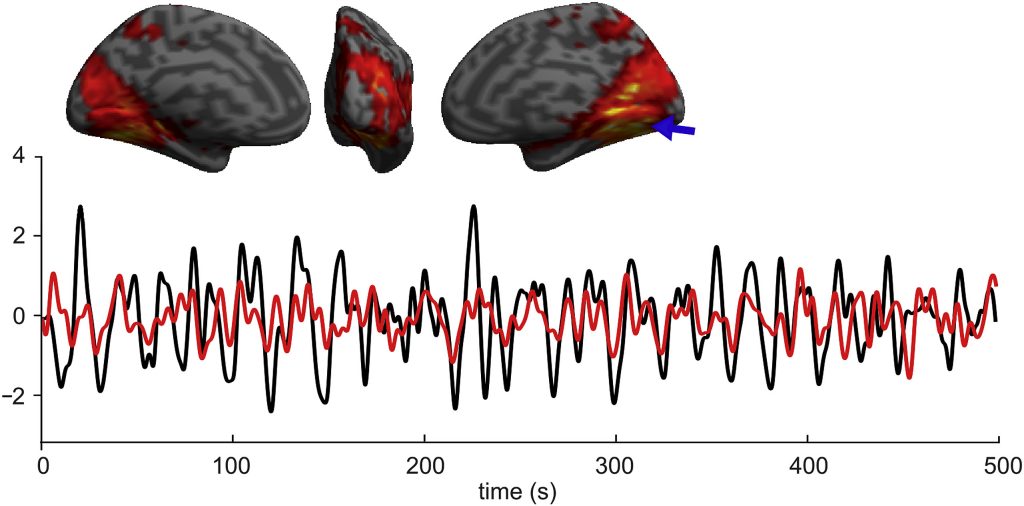
For detailed information, the reader is referred to the original article: Lankinen K, Saari J, Hlushchuk Y, Tikka P, Parkkonen L, Hari R, Koskinen M. (2018). Consistency and similarity of MEG- and fMRI-signal time courses during movie viewing. NeuroImage. https://www.sciencedirect.com/science/article/pii/S1053811918301423
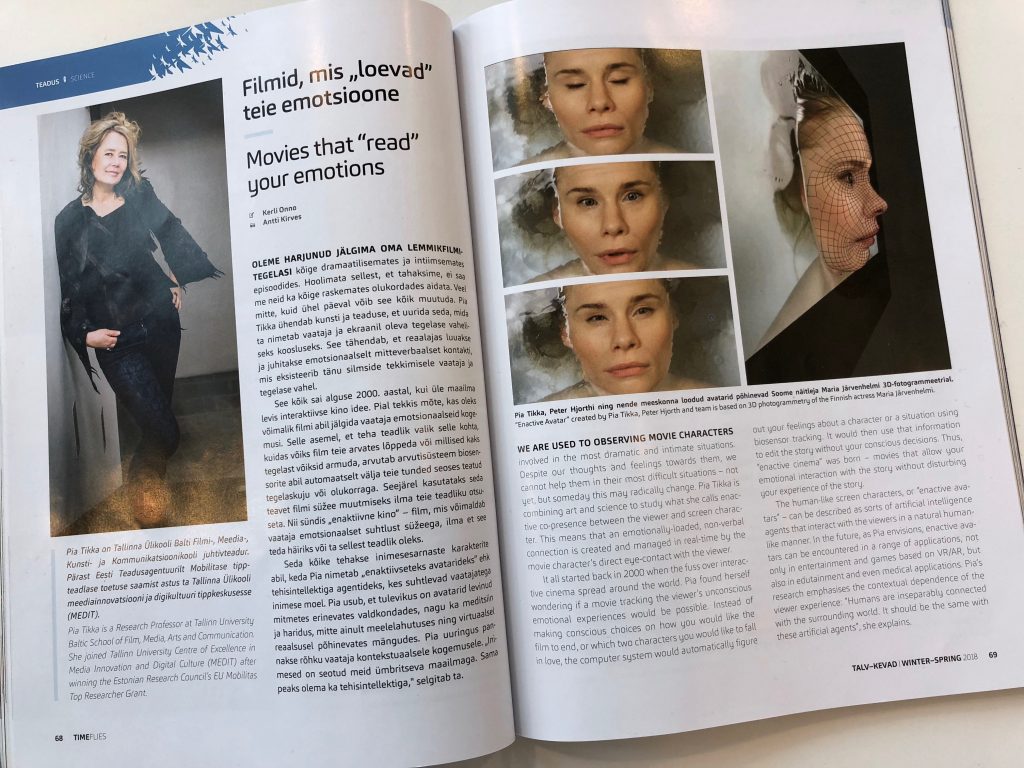
You can find an article about prof Pia Tikka and her studies on enactive co-presence between the viewer and screen character in the Nordica in flight magazine “Time Flies”.
You can also read the article in BFM’s blog:
http://media.tlu.ee/
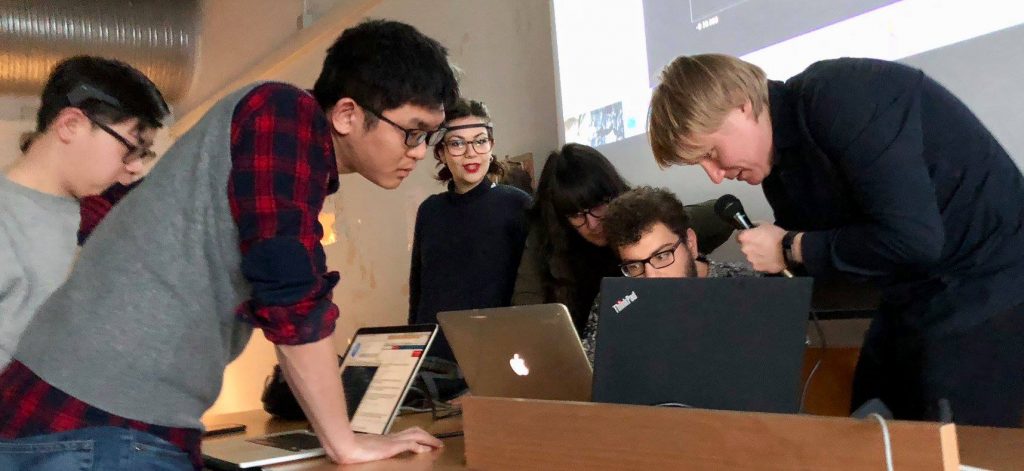
At the Politecnico Milano, School of Design, professor Pia Tikka (MEDIT/BFM) and Ilkka Kosunen (MEDIT/DTI – in image on the right) are running their workshop week with a group of 40 students of Communication Design.
The topic is as challenging as thrilling: “Enactive Mind and Media”.
In addition to providing the students at Polimi new insights to Enactive media and biosensor-driven interaction design, the workshop also contributes to the international dissemination strategy of the EU Mobilitas Pluss Top Research project by Dr. Pia Tikka. Ilkka Kosunen’s travel is funded by Erasmus Mobility, TLU. The workshop utilizes (DTI) Digital Technology Institute’s biosensor technology and expertise. During the workshop also contacts with the local hi-tech researchers and industry are created.
A great news is that the bilateral agreement of Erasmus Mobility for Staff Exchange has been established between Tallinn University BFM and Politecnico Milano School of Design starting 2018 January. The agreement was initiated at TLUby Enactive Virtuality Lab.
Pia Tikka
Enactive Virtuality team in search for the common grounds with TTÜ and EKA at Ericsson Connectivity room in Mektory House (Raja 15, 12618 Tallinn) 25.01.2018. In order to cultivate successful research environments to study and develop innovations within virtual reality, augmented reality and other related audiovisual fields, collaboration across distinct academic institutions with their specific expertise is essential.

Hosts@TTÜ: Aleksei Tepljakov Research Scientist, Eduard Petlenkov Associate Professor, and Ahmet Kose Junior Researcher at TTU; Guests: Kristjan Mändmaa, Dean of Design, Ruth Melioranski Design Researcher, Tanel Kärp Interaction Design Program Manager at EKA; Suk-Jae Chang, AR/VR businessman; Pia Tikka, Professor TLU.
Link to Recreation Lab at TTU: https://recreation.ee

Speaker: Bruce Sheridan (University of Auckland)
Time: January 19th (Thursday) at 15:00
Place: M-213
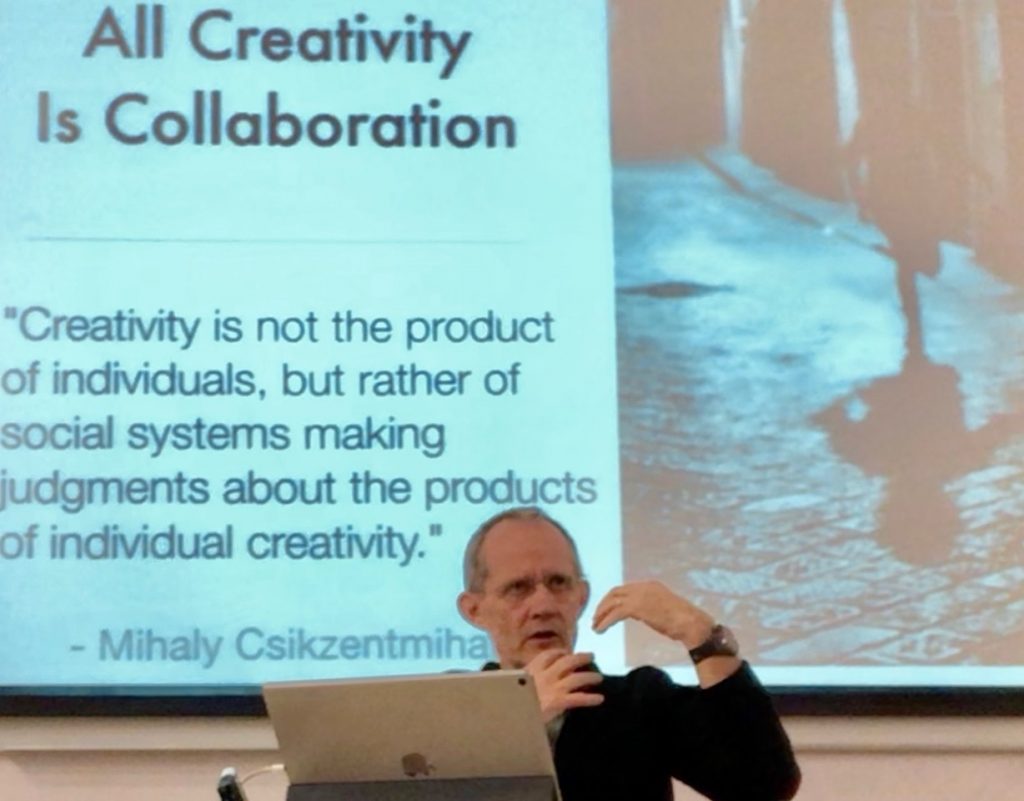
Cognitivism and computational theories of mind drove approaches to creativity through the 20th century, and formal education across arts and sciences continues to draw on assumptions that are increasingly challenged by developments in neuroscience and artificial intelligence. By emphasizing the physically embodied, socially extended, and inherently enactive nature of human mentation, creativity can be understood as a fundamental, ubiquitous, and highly dynamic capacity central to all human activities. In this presentation I consider ways to conceptualize creativity and learning holistically, and how this approach can both draw from and contribute to work in the biological, physical, and social sciences.
Professor Bruce Sheridan is a filmmaker and educator based in Chicago. He began his filmmaking career in New Zealand, where he produced and directed drama and non-fiction projects for cinema and television, and won the 1999 Best Drama Award for the tele-feature Lawless. From 2001-2017 he was Chair of Cinema Art + Science at Columbia College Chicago, where he led the creation of the Media Production Center, a unique laboratory for modeling and investigating professional collaborative filmmaking practice. Professor Sheridan is Chair of the North American region of CILECT, the international organization of screen education institutions, and a member of the Creativity Research Initiative team at the University of Auckland, New Zealand, where he is currently completing his PhD in philosophy.
With Bruce and Pia in the middle: Vice-Rector for Creative Activities and Cooperation Andres Jõesaar, Head of BFM Katrin Saks, and our EU Mobilitas Plus -project coordinator Maria Hansar.
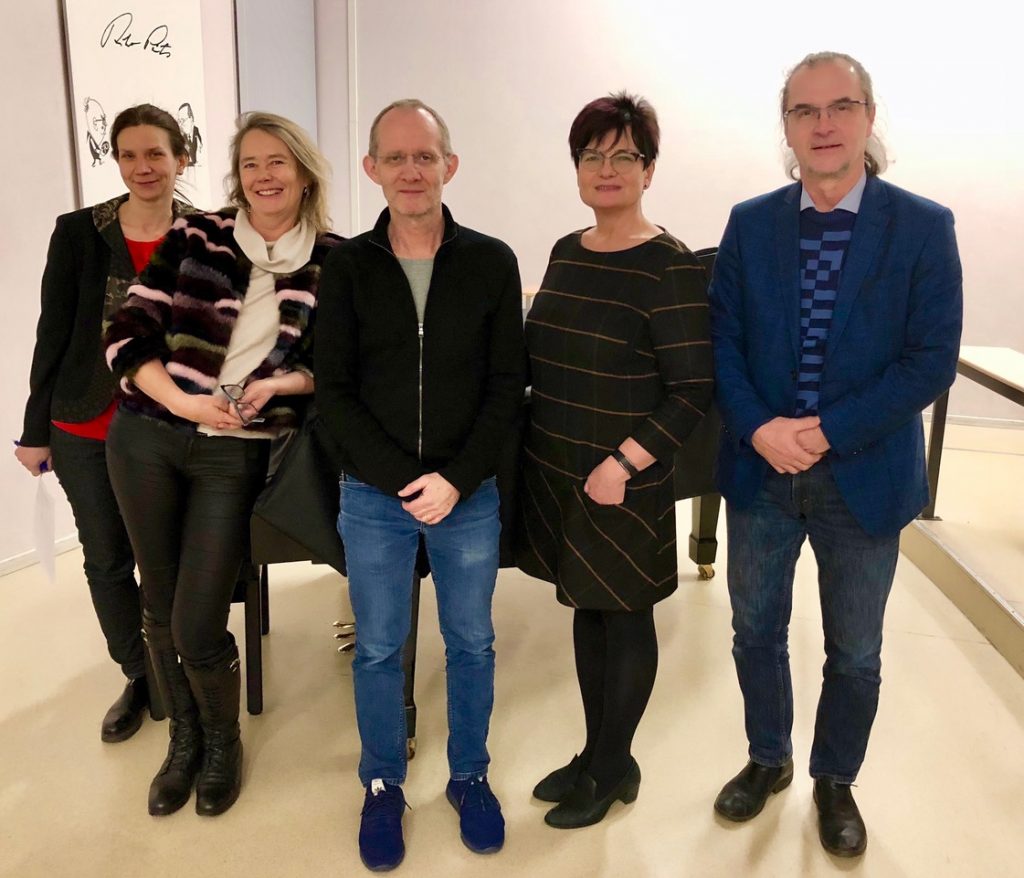

A snapshot with Victor Pardinho and Ilkka Kosunen engaged with our enactive avatar and unreal engine.